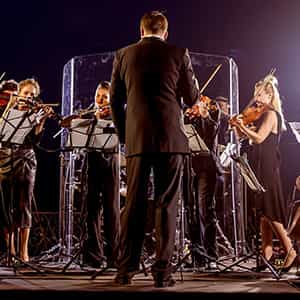

Brahms Symphony No. 4 Tickets
No Buyer Fees on Brahms Symphony No. 4 Tickets and Up to 30% Off Compared to Competitors. Learn More →
Select Location (e.g, New York)
Events Nearby
- Mar 5, 2026THU•7:00 PMMar5thu7:00 PM - Boston Symphony Orchestra: Herbert Blomstedt - Brahms' Symphony No. 4Boston Symphony Hall, Boston, MA
- Mar 6, 2026FRI•1:30 PMMar6fri1:30 PM - Boston Symphony Orchestra - Brahms Symphony No. 4 with Herbert BlomstedtBoston Symphony Hall, Boston, MA
- Mar 7, 2026SAT•8:00 PMMar7sat8:00 PM - Boston Symphony Orchestra - Brahms Symphony No. 4 with Herbert BlomstedtBoston Symphony Hall, Boston, MA
- Apr 23, 2026THU•11:00 AMApr23thu11:00 AM - Minnesota Orchestra: Kristiina Poska - Brahms Symphony No. 4Orchestra Hall - MN, Minneapolis, MN●19 Tickets Left!
- Apr 24, 2026FRI•8:00 PMApr24fri8:00 PM - Minnesota Orchestra: Kristiina Poska - Brahms Symphony No. 4Orchestra Hall - MN, Minneapolis, MN●28 Tickets Left!
- May 16, 2026SAT•8:00 PMMay16sat8:00 PM - Florida Orchestra: Brahms' Symphony No. 4Mahaffey Theater At The Duke Energy Center for the Arts, St. Petersburg, FL
- May 17, 2026SUN•2:00 PMMay17sun2:00 PM - The Florida Orchestra: Michael Francis - Brahms Symphony No. 4Ruth Eckerd Hall, Clearwater, FL●75 Tickets Left!
Brahms Symphony No. 4 Cities & Venues
Frequently Asked Questions About Brahms Symphony No. 4 Tickets and Events
What are the key themes explored in Brahms Symphony No. 4?
Brahms Symphony No. 4 explores themes of melancholy, struggle, and triumph, showcasing a rich emotional landscape through its intricate orchestration and harmonic complexity.
Who are some notable conductors known for performing Brahms Symphony No. 4?
Notable conductors who have performed Brahms Symphony No. 4 include Herbert von Karajan, Leonard Bernstein, and Gustavo Dudamel, each bringing their unique interpretation to the piece.
What instruments are prominently featured in Brahms Symphony No. 4?
Brahms Symphony No. 4 features a full orchestral complement, including strings, woodwinds, brass, and percussion, with particular prominence given to the cellos and the brass section.
How does Brahms Symphony No. 4 compare to his other symphonies?
Brahms Symphony No. 4 is often regarded as his most mature work, showcasing a blend of classical structure with deep emotional content, setting it apart from his earlier symphonies in terms of complexity and depth.
What is the historical significance of Brahms Symphony No. 4?
Brahms Symphony No. 4, completed in 1885, is significant as it represents Brahms' final symphonic work, marking a culmination of his compositional style and solidifying his place in the symphonic tradition.
Can you describe the structure of Brahms Symphony No. 4?
Brahms Symphony No. 4 is structured in four movements: I. Allegro non troppo, II. Andante moderato, III. Allegro giocoso, and IV. Allegro energico e passionato, with the final movement incorporating variations on a theme.
What are some common interpretations of Brahms Symphony No. 4?
Common interpretations of Brahms Symphony No. 4 often focus on its emotional depth, with conductors emphasizing the contrasts between the lyrical and the dramatic elements, as well as the intricate interplay between the orchestra sections.
What impact did Brahms Symphony No. 4 have on later composers?
Brahms Symphony No. 4 had a significant impact on later composers, influencing the development of symphonic writing and inspiring figures such as Mahler and Bruckner in their own symphonic compositions.
Are there any famous recordings of Brahms Symphony No. 4?
Yes, there are many famous recordings of Brahms Symphony No. 4, including those by the Berlin Philharmonic under Herbert von Karajan and the Vienna Philharmonic under Leonard Bernstein, which are often regarded as benchmark interpretations.
What is the typical duration of Brahms Symphony No. 4?
The typical duration of Brahms Symphony No. 4 is approximately 40 to 45 minutes, depending on the conductor's interpretation and the tempo choices made during the performance.

